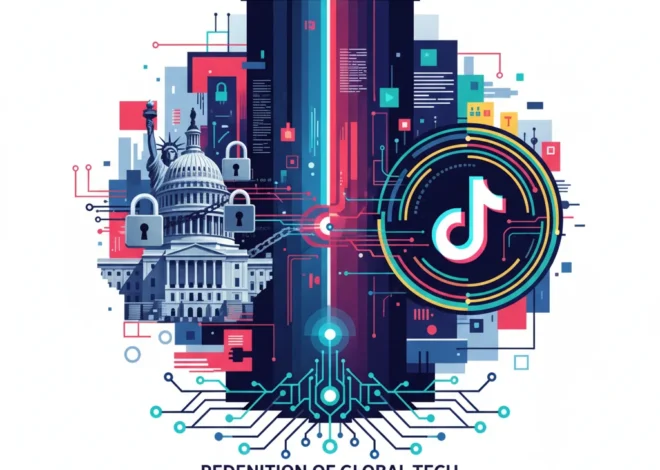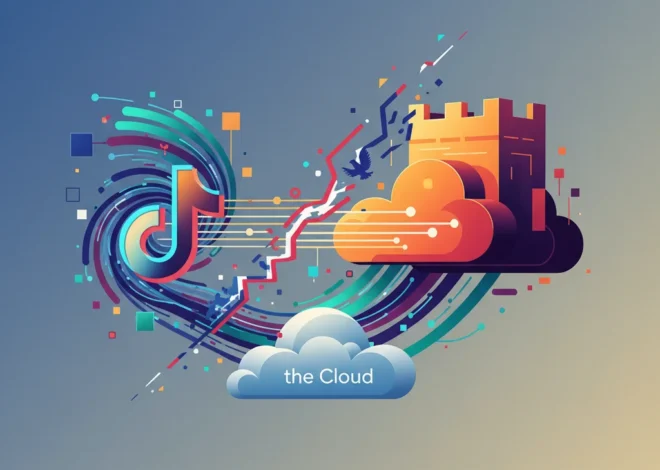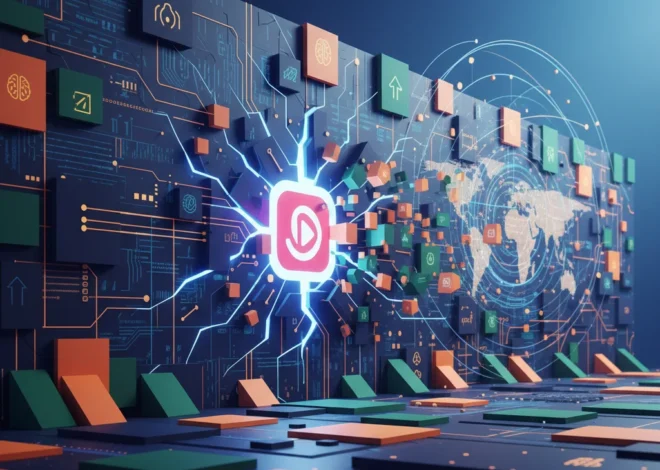
The “Bragawatt” Boom: Is AI’s Hunger for Power a Ticking Time Bomb for Tech?
The Silent Hum Behind the AI Revolution
We’re living through a seismic shift in technology. Artificial intelligence, once the domain of science fiction, is now composing music, writing code, and powering the next generation of software. From groundbreaking medical research to hyper-personalized marketing, the potential of AI seems boundless. But behind the curtain of these incredible digital feats, there’s a constant, voracious hum—the sound of electricity being consumed on a scale that is difficult to comprehend.
Every time you prompt a generative AI model, you’re tapping into a global network of massive, power-hungry data centers. The graphics processing units (GPUs) that form the backbone of modern machine learning are energy gluttons. As the AI arms race heats up, the tech giants—the “hyperscalers” like Amazon, Microsoft, and Google—are locked in a battle not just for computational supremacy, but for the one resource that fuels it all: power.
This has given rise to a new, unofficial unit of measurement in Silicon Valley: the “bragawatt.” Coined by the sharp minds at the Financial Times, a bragawatt isn’t a real unit of energy. It’s a unit of ambition, a public declaration of future power needs designed to signal market dominance, secure energy contracts for decades to come, and reassure investors that they’re all-in on the AI revolution. But how many of these bragawatts have been announced? And what does it actually mean for the rest of us?
The answer, according to a recent Financial Times analysis, is a number so large it requires a pop-culture touchstone to grasp: 55.6 gigawatts. That’s enough energy for 46 time jumps in a DeLorean. While whimsical, this figure points to a stark reality: the future of AI is inextricably linked to the future of our energy infrastructure.
Decoding the 55-Gigawatt Problem
So, what exactly are hyperscalers planning to do with all that power? It’s not just about keeping the lights on. Training a single large language model (LLM) like GPT-4 can consume an astronomical amount of electricity. For instance, researchers at UC Berkeley estimated that training GPT-3 consumed roughly 1,300 megawatt-hours (MWh) of electricity, equivalent to the annual energy use of over 120 U.S. homes (source). And that’s just for one model, one time. The ongoing operation (inference) of these models for millions of users worldwide requires a continuous, massive supply of power.
To understand the sheer scale of the 55.6 GW of announced future demand, let’s put it into context. This isn’t just a big number; it’s a nation-state-level power requirement.
Here’s a look at how that future AI power demand stacks up against other massive energy consumers:
| Entity | Peak Power Demand / Capacity (Approx.) |
|---|---|
| Hyperscalers’ Announced AI Demand | 55.6 GW |
| Entire Country of Ireland (Peak Demand) | ~7.5 GW (source) |
| Entire Country of Sweden (Peak Demand) | ~26 GW |
| Typical Large Nuclear Power Plant (Output) | 1-1.2 GW |
| New York City (Peak Summer Demand) | ~12 GW |
As the table shows, the hyperscalers are planning to build out an AI infrastructure that will require more power than the entire countries of Ireland and Sweden combined. It’s the equivalent of needing about 50 new nuclear power plants dedicated solely to running AI models. This isn’t a gradual increase; it’s an exponential explosion in demand that is putting immense pressure on global energy grids.
AI Just Redefined 100,000 Jobs: Why PwC's Hiring Reversal Is a Wake-Up Call for Us All
The Ripple Effect: What This Means for Startups, Developers, and Cybersecurity
This colossal energy demand isn’t just a problem for the hyperscalers. It has far-reaching consequences for everyone in the tech ecosystem, from the smallest startups to individual developers.
For Startups & Entrepreneurs
The era of “cheap” and seemingly infinite cloud computing is facing a reality check. As energy becomes a primary cost driver for cloud providers, those costs will inevitably be passed down to customers. For AI-native startups, this could mean:
- Rising Cloud Bills: The cost of training and running proprietary models on platforms like AWS, Azure, and GCP is set to increase. Budgeting for compute will become a critical strategic challenge.
- A Premium on Efficiency: Startups that can do more with less—developing smaller, more efficient models or pioneering novel compression techniques—will have a significant competitive advantage. The “lean startup” methodology is about to get a whole new meaning.
- New Market Opportunities: This challenge creates a wave of opportunity for MLOps and AIOps startups focused on monitoring, managing, and optimizing the energy consumption and cost of AI workloads. Think of it as “FinOps for AI.”
For Developers & Programmers
The focus in programming is shifting. For decades, developers could often rely on Moore’s Law and cheap cloud resources to brute-force inefficient code. That luxury is disappearing. The future will demand:
- Energy-Aware Software Development: Writing efficient, optimized code is no longer just good practice; it’s becoming an economic and environmental necessity. Understanding the energy impact of different algorithms and data structures will be a valuable skill.
- Expertise in Model Optimization: Skills like model quantization (reducing the precision of a model’s weights), pruning (removing unnecessary connections), and knowledge distillation (training a smaller model to mimic a larger one) are moving from academic concepts to essential industry skills.
- The Rise of “Green Coding”: A new discipline focused on minimizing the carbon footprint of software applications will emerge, influencing everything from language choice to deployment strategies.
The Unseen Crisis: What ChatGPT's Data Reveals About Our Mental Health and the Future of AI
For Cybersecurity Professionals
The centralization of immense power resources also creates novel threats. The cybersecurity landscape will evolve to address:
- Critical Infrastructure Threats: Data centers are already critical infrastructure, but their connection to national power grids becomes a more pronounced vulnerability. An attack that disrupts power to a major data center region could have cascading effects on the global economy.
- Resource Depletion Attacks: Malicious actors could design “energy-vampire” AI models or workloads specifically to drive up a competitor’s cloud costs or strain their infrastructure, a new form of denial-of-service attack.
- Physical Security Convergence: The line between cybersecurity and physical security will blur further as protecting the power and cooling supply to data centers becomes as important as protecting the data itself.
The Path Forward: From Bragging to Building Sustainably
The challenge is immense, but so is the capacity for innovation within the tech industry. Simply building more fossil-fuel power plants is not a viable long-term solution. The path forward requires a multi-pronged approach that balances relentless progress with genuine responsibility.
First, hyperscalers are already making massive investments in renewable energy, aiming to power their operations with 100% clean energy. Microsoft, for example, has been carbon neutral since 2012 and is pursuing a goal to be carbon negative by 2030 (source). These efforts must accelerate, moving from purchasing credits to directly funding and integrating new renewable projects that add capacity to the grid.
Second, the future lies in software and hardware automation and optimization. This includes everything from more efficient chip architectures (like custom-designed AI accelerators) and advanced liquid cooling systems to intelligent workload scheduling that shifts non-critical compute jobs to times when renewable energy is most abundant on the grid.
Finally, the industry needs to move beyond “bragawatts” to transparent, standardized reporting of energy consumption and carbon footprint. This allows customers, investors, and regulators to make informed decisions and hold companies accountable for their environmental impact.
The Chip War's New Frontline: Why a Dutch Factory Crisis Threatens Your Entire Tech Stack
Conclusion: Powering the Future, Responsibly
The age of artificial intelligence is here, and it runs on electricity—a lot of it. The “bragawatt” boom is a clear signal that the digital and physical worlds are colliding in a way we’ve never seen before. The 55.6-gigawatt question isn’t just about whether we can find enough power; it’s about whether we can harness it wisely, efficiently, and sustainably.
For everyone in tech—from the CEO of a hyperscaler to a startup founder sketching an idea on a napkin—this is a shared challenge. The next great wave of innovation won’t just be about creating smarter algorithms, but about building an entire technological ecosystem that is as intelligent about its own impact as the models it runs.


